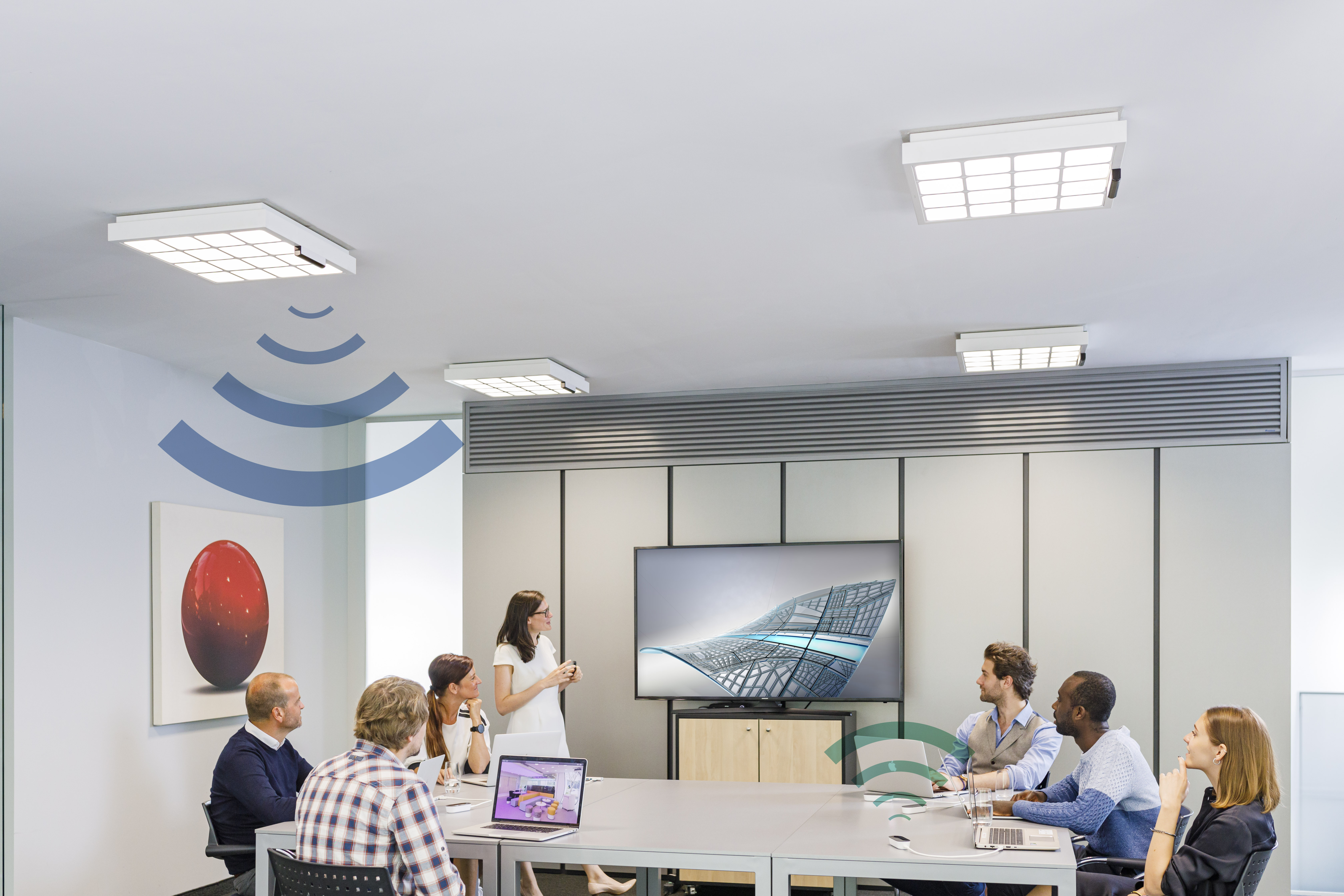The European Union announced an establishment of a new three-year project, ELIoT (Enhance Lighting for the Internet of Things), which aims to develop mass market Internet of Things (IoT) solutions using LiFi.
With LiFi, the ELIoT consortium will explore a networked wireless communication technology operating in the previously unused light spectrum, besides Wi-Fi and cellular radio. LiFi can be used in environments where certain radiofrequencies are not possible or allowed.
For outdoor usage, it could offer high bandwidth point-to-point links from rooftops, between streetlights or to consumers’ homes for next generation networks. Higher network demands might come from software-controlled production, virtual and augmented reality and autonomous driving where LiFi could prove useful.

(Image: Signify)
ELIoT has started in 2019 as a project funded by EUs biggest research and innovation program, Horizon 2020. This program promises more breakthroughs by taking great ideas from the lab into the market. ELIoT receives EUR 6 million (US$ 6.72 million) funding from the Public-Private Partnership ‘Photonics21’ and is formed by the partners Signify, Nokia, MaxLinear, Deutsche Telekom, KPN, Weidmüller, LightBee, the University of Oxford, Eindhoven University of Technology and the two Fraunhofer Institutes Heinrich Hertz Institute HHI and FOKUS..
"With ELIoT, we have established a powerful consortium of companies and organizations from the European lighting and communications industries. ELIoT forms a closed value chain with partners representing the components, chipsets, systems and applications sectors and research institutes, working together on the commercialization of LiFi for the future IoT," says Dr. Volker Jungnickel (Fraunhofer HHI) who serves as project coordinator.
Prof. Jean-Paul Linnartz, co-initiator of ELIoT and also leading Signify’s research in LiFi, confirms the potential of ELIoT, “LiFi can deliver high-speed communication, interference-free with high reliability. The available spectrum can be fully reused in every room. The lighting infrastructure is in an excellent position to provide wireless connectivity for the rapidly increasing number of wireless devices in every room.”





 CN
TW
EN
CN
TW
EN






